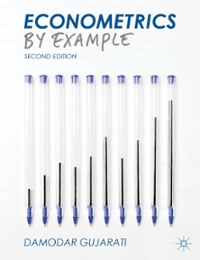Question
Please utilize well-executed, clearly constructed graphs where requested. Please remember to: Label all axes (P, Q) Label all lines/curves (Demand, Supply) Label all relevant equilibrium
Please utilize well-executed, clearly constructed graphs where requested. Please remember to: Label all axes (P, Q) Label all lines/curves (Demand, Supply) Label all relevant equilibrium points Label intercepts for your linear demand and supply. (Intercepts are the points where the lines intersect the axes. For example, if a demand curve intersects the price axis at P=100, indicating that at P=100, 0 units are purchased, you should label that point on the axis with the price of 100) Please limit your depictions of supply and demand only to the non-negative values of P and Q (e.g., utilize only Quadrant 1 of the coordinate plane). This means that your supply curve will have one applicable intercept on the P-axis, while the demand curve will have two applicable intercepts on the P- and Q-axes. Clearly label areas that correspond to consumer surplus (CS) and producer surplus (PS).
Question 1
Imagine that you have been given a job as an economic advisor to evaluate a certain competitive US manufacturing industry. Your (accurate) statistical analysis indicates the market is characterized by demand of Qd = 300 - 4P and supply of Qs = 2P - 60.
Solve for equilibrium price P1 and quantity Q1. Depict the supply curve S1 and demand curve D1 on the usual P, Q diagram. Label all relevant intercepts (including two intercepts for the demand curve and one intercept for the supply curve). Clearly indicate and label the market equilibrium. Graphically indicate the areas of Consumer Surplus (CS1) and Producer Surplus (PS1). Compute the values of Consumer Surplus (CS1) and Producer Surplus (PS1), clearly indicating the units that CS and PS are measured in.
Question 2
Continuing your analysis of the competitive US manufacturing industry from Question 1, with demand of Qd = 300 - 4P and supply of Qs = 2P - 60, suppose an increase in labor costs causes the supply curve to decrease, shifting the curve up by $15 for every given quantity Q. Determine the new supply equation. (Hint: What approach have you used to model taxes and subsidies in previous assignments?) Solve for equilibrium price P2 and quantity Q2. Depict the original supply S1, the new supply S2, and the original demand D1 on the usual P, Q diagram. Label all intercepts (including two intercepts for the demand curve and one intercept for the supply curve). Clearly indicate and label the new market equilibrium. Graphically indicate the areas of Consumer Surplus (CS2) and Producer Surplus (PS2) that resulted from the new market equilibrium. Compute the values of Consumer Surplus (CS2) and Producer Surplus (PS2) associated with the new market equilibrium, clearly indicating the units that CS and PS are measured in. What was the impact of the shift in the supply on consumers and producers, based on the comparison of CS and PS in Questions 1 and 2? In other words, were each of these two groups of market participants hurt or made better off by change? Why? (Narrative response; suggested length of three to four sentences or one paragraph.)
Step by Step Solution
There are 3 Steps involved in it
Step: 1

Get Instant Access to Expert-Tailored Solutions
See step-by-step solutions with expert insights and AI powered tools for academic success
Step: 2

Step: 3

Ace Your Homework with AI
Get the answers you need in no time with our AI-driven, step-by-step assistance
Get Started


